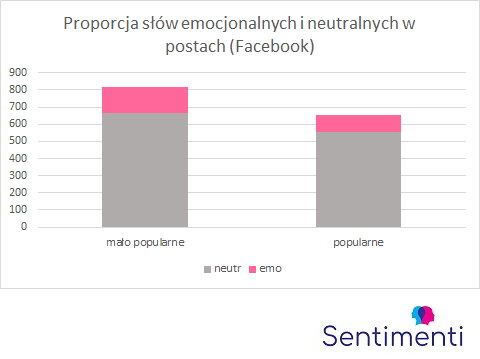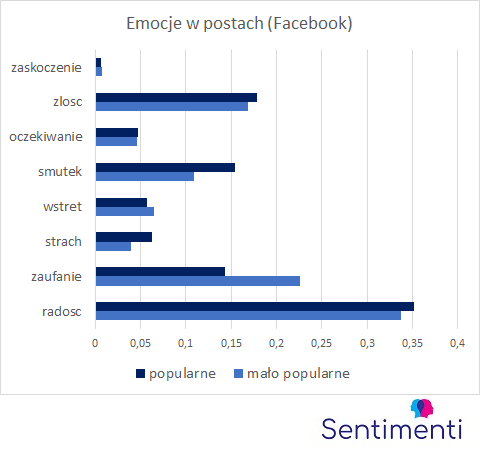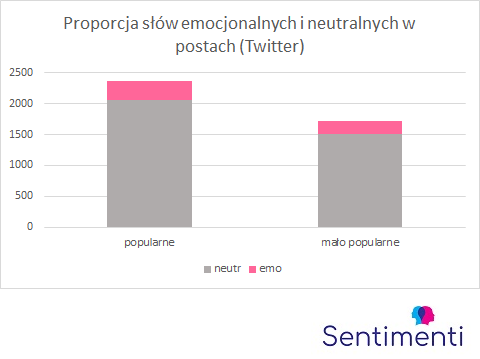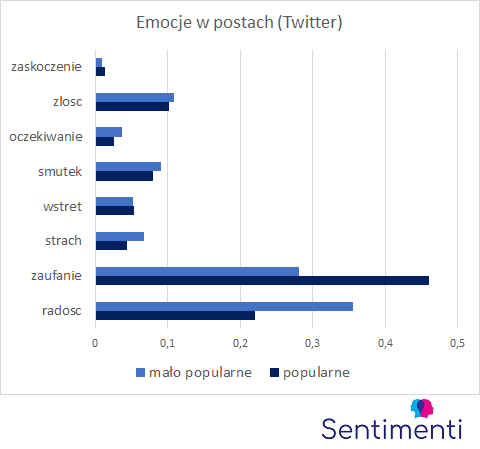
by Sentimenti Team | Jul 2, 2021 | Market research, Scientific publications
Place of publication:
- Human Vaccines & Immunotherapeutics, 2021
Title:
Vaccine misinformation on social media – topic-based content and sentiment analysis of Polish vaccine-deniers’ comments on Facebook
Authors:
Abstract:
Introduction: Vaccinations are referred to as one of the greatest achievements of modern medicine. However, their effectiveness is also constantly denied by certain groups in society. This results in an ongoing dispute that has been gradually moving online in the last few years due to the development of technology. Our study aimed to utilize social media to identify and analyze vaccine-deniers’ arguments against child vaccinations.
Method: All public comments posted to a leading Polish vaccination opponents’ Facebook page posted between 01/05/2019 and 31/07/2019 were collected and analyzed quantitatively in terms of their content according to the modified method developed by Kata (Kata, 2010). Sentiment analysis was also performed.
Results: Out of 18,685 comments analyzed, 4,042 contained content covered by the adopted criteria: conspiracy theories (28.2%), misinformation and unreliable premises (19.9%), content related to the safety and effectiveness of vaccinations (14.0%), noncompliance with civil rights (13.2%), own experience (10.9%), morality, religion, and belief (8.5%), and alternative medicine (5.4%). There were also 1,223 pro-vaccine comments, of which 15.2% were offensive, mocking, or non-substantive. Sentiment analysis showed that comments without any arguments as well as those containing statements about alternative medicine or misinformation were more positive and less angry than comments in other topic categories.
Conclusions: The large amount of content in the conspiracy theory and misinformation categories may indicate that authors of such comments may be characterized by a lack of trust in the scientific achievements of medicine. These findings should be adequately addressed in vaccination campaigns.
Link:
Taylor & Francis Online
Citation BibTeX:
@article{doi:10.1080/21645515.2020.1850072,
author = {Krzysztof Klimiuk and Agnieszka Czoska and Karolina Biernacka and Łukasz Balwicki},
title = {Vaccine misinformation on social media – topic-based content and sentiment analysis of Polish vaccine-deniers’ comments on Facebook},
journal = {Human Vaccines \& Immunotherapeutics},
volume = {0},
number = {0},
pages = {1-10},
year = {2021},
publisher = {Taylor & Francis},
doi = {10.1080/21645515.2020.1850072},
note ={PMID: 33517844},
URL = {
https://doi.org/10.1080/21645515.2020.1850072
},
eprint = {
https://doi.org/10.1080/21645515.2020.1850072
}
}

by Sentimenti Team | Aug 28, 2020 | Sentistocks
Sentistocks emerges on the market with a very innovative approach to crypto analysis. The Sentimenti project focuses on the use of 8 emotions measurement and arousal to accurately predict the price trend of market assets.
From now on it has collaborated with leading cryptocurrency data aggregator – Coinpaprika to provide a new feature – widget presenting daily forecast for Bitcoin (BTC) price.
The tool will be constantly improved and expanded with more features to analyze the most important cryptocurrencies for key stock exchanges, in shorter intervals (1hr – 8hrs).

Soon, there will be expanding solutions, analyzing the most important cryptocurrencies for key exchanges, in shorter intervals, between 1h and 8h.
Sentistocks, apart from the crypto market, applies its innovative analyses on other markets and instruments, such as stock indices or F/X market.

by Agnieszka Czoska | Apr 9, 2020 | Sentimenti research
You’ve been in Sentimenti from the beginning. What was it like in 2016?
The business idea for the study of emotions in the text came from W3A.PL company from Poznan. After consultations with the environment of Poznań psychologists, cognitive scientists and linguists, a draft of the project for NCBiR (National Centre for Research and Development) was prepared and the search for subcontractors started. After estimating the market, it turned out that two units are capable of undertaking such advanced research work: LOBI IBD PAS and Language Technology Group of Wrocław University of Technology.
Once you got the grant, how did you start working?
As a research manager I was responsible for organizing the work of the team. It was important for me to combine the scientific teams of subcontractors and the business team into one team. The interface between business and science is not easy. In the Sentimenti team everyone – presidents, PhDs and MSc – speaks to each other by name, each person has the right to express their opinion and make decisions.
You are the research manager and scrum master of our team – how much did you have to learn to become one?
I learned the Scrum management methodology for R&D projects in the UK, where I worked in the Argument Analytics project conducted in cooperation with the University of Dundee and financed by Innovate UK, the British equivalent of NCBiR. I understood then that the key issue in the cooperation between science and business is good communication. A common team, preferably working in one place, frequent meetings and evaluation of results to check if this is really what we want – this is the heart of good projects. Many other R&D projects that I have observed did not achieve their goals precisely because of such a lack of communication.
How does the scrum method differ from your previous project experience?
I am a scientist and I have gained most of my experience in academic work and basic research. The transition to applied research was not easy, but I was given a lot by the British culture of openness, communication and respect – the values that are inscribed in Scrum and that we transfer to our team. The three pillars of Scrum are also important: transparency, inspection and adaptation. Transparency means that every person in the team – even new and unfamiliar with the subject – has access to all information (except, of course, confidential information). This helps a lot in overcoming crises, looking for a solution.
And what are inspection and adaptation?
An inspection is a frequent and short “review” meeting, during which we check what has already been completed, whether we do not have any obstacles that the project management should deal with, whether someone has too much or too little work. This helps to master the natural feature of research projects – unpredictability. When the results are different from we expected or when we get information from the business that a solution is not working – we can quickly adapt.
How do you see further development of Sentimenti?
In February, we have already finished our research work and moved on to development work, i.e. we use the collected knowledge and data in the work on Sentitol – our main tool for text analysis. Thanks to the fact that we use an iterative approach, we implement functionalities by adding them in subsequent versions of the product, and simultaneously – according to the Scrum methodology – we finish each Sprint (stage of work in Scrum) with a working product. At the moment, we have working software that recognizes eight emotions in texts in Polish, thanks to research on over 20 thousand people. This is already a solution that exceeds the scope of other solutions present on the market, and we are preparing two more versions.
In the next version of Sentimenti we will include a module using LSS (Lexical Syntactic Structures), i.e. elements of the language that affect the evaluation, e.g. good + no, + very, + a little. Then we will include a module that uses deep neural networks technology, or more precisely – BiLSTM (bidirectional long short-term memory neural networks), so that it can evaluate the emotions throughout the text immediately – and this is a unique solution on a Polish scale, but also worldwide. Our scientific publication about this module will be published soon.
Therefore, in the project we use fast prototyping, and in parallel to the work of the scientific team, the company implements any new solution for customers – because we have a great interest in our solutions. Thanks to this we have already achieved much better results (and faster) than we planned at the beginning.

by Agnieszka Czoska | Mar 14, 2019 | Sentimenti research
Each data analysis is aimed at understanding what information it contains. Has something changed, or is there a difference between A and B? Do changes in A correlate with those in C or D? Only these steps allow us to draw conclusions about the results.
First stage: measurement. What is the text?
The above statement also applies to the analysis of emotions or sentiment. Its first stage is the MEASUREMENT, checking how many and what kind of emotions we find in a given text or set of them. The result of a simple emotion measurement shows the intensity of each of Plutchik’s 8 basic emotions supplemented by positive and negative sentiment and arousal (overall emotional temperature of the text). Sometimes we can afford to interpret it already at this stage. We did it in one of our first entries, where we analyzed short ads (what is important, we have already managed to improve the way the results are presented). By analyzing the ads we wanted to show something characteristic for the whole type of texts: the most important emotions are joy and trust, only at the very beginning of the story about the product the creators allow themselves to remember the negative ones – to show the hardships of life before the era of the best shampoo or grease in the world.
The correct results of the Emotional Measurement are those that are consistent with people’s feelings, after all, each of us is an expert on feelings. Our tool owes its correctness to the participants of research on emotions in Polish, which we conducted according to the best scientific standards.

Measurement is only the first step towards understanding the message and the emotions it contains. When we deal with many similar texts or collections of texts, we have to do something else. We want to find out which shop has the best opinions? Which version of our marketing content expresses the most enthusiasm or best shows interest in the subject? Which of the texts in the “Beauty” section will delight, move or warn the reader? We are talking about COMPARISON.
The second stage: comparison. Does this text differ from the average?
Comparison is perhaps the most important stage in the analysis of emotions – thanks to it we not only find out what the text is like, but also how it compares with others. We can compare directly – as we did when writing about lipsticks and lipsticks. Then we were interested in which of the topics has an advantage in terms of positive emotions and whether this difference is statistically significant. However, comparing several or a dozen or so different cosmetic brands cannot be done in this way, it would not be the correct approach. That is why in the text about beauty companies we used a comparison to the average – we needed some kind of background measurement, so-called baseline. This approach will be useful, for example, when comparing shops and brands. We then answer the question which brand has better or worse results than most of the industry.
The most general type of baseline would be the sum of emotions that characterize not only the domain, portal or texts of a given author, but simply language. In linguistics, the so-called Polyanna effect is known, which is that there are more positive than negative expressions in every language. Not only in the dictionary, but also in what we say – this effect expresses quite a general tendency of our minds to spend time and energy rather on pleasant things. In our research we very often see this tendency – joys and trust are emotions that appear in the greatest intensity not only in advertising. The fact that language has its emotional mean all the more reason to draw conclusions only based on comparison and not on the measurement itself.
Third stage: trends. What do emotions do?
The analysis of emotions is also about tracking changes in time, i.e. monitoring emotions. We can check whether sadness or revulsion show a growing trend, i.e. there are more and more of them in statements on a given topic or in the opinions of customers. If we notice a trend, which is statistically significant, we can predict what will happen in the future and if by chance it does not mean an impending crisis (depending on the slope of the trend line).
At this stage it is also possible to go beyond the data from the Sentimenti tools. We started with something simple, accessible and yet untouched by others – we compared the emotional temperatures of mentions of listed companies with the prices of their shares, published publicly. Sentistock is great, it allows you to determine what the investor mood really is and how it translates into stock market fluctuations.
This part of the analysis of emotions depends entirely on who and for what purpose wanted to examine the overtones of the text, the notes, the conversation. We have also managed to show which emotions correlate positively with reactions on Facebook and Twitter – that is, how to write, so that the observers would like to like or comment on the post. However, we might as well ask how emotions correlate with remembering information from the text. Studies on the psychology of emotions, including those conducted by our colleagues from LOBI, indicate that the overtones of the text have an impact on what and how well we remember. Correlation between customer feedback and online store sales? Our tools are designed for this type of research.
Why so many stages?
Emotions were not created for themselves. This is our advisory mechanism: they tell us what action to take. Tversky and Kahneman did not receive the Nobel Prize for their research, but for showing that the consumer, including the stock market, is not rational. This statement tells us two things:
- emotions shape the market,
- we need good tools and methods to study this impact.
Trying to understand the emotions “on the eye” we won’t know more than the average customer wanting to buy a new computer, reading all the available reviews and then deciding on the brand for which he or she has (and had) the warmest feelings. Maintaining scientific standards, checking whether differences and trends are statistically significant and even better correlate with other, harder indicators is the best way to find out. After all, we live in the era of big data and data analysis.

by Agnieszka Czoska | Feb 7, 2019 | SentiBrand
Not only our analyses show from time to time that the more emotions we show, the more we receive from our interlocutors. What’s more, I think everyone knows the basic principle of advertising and marketing: emotions pay off because they generate reactions. On the wave of these beliefs, we decided to check whether actually popular Facebook and Twitter posts are more emotional than those that evoke less liking or commentary.
We used Facebook Insights and Tweet Activity analytics statistics. We focused only on those that tell us about the actual interest in a given post: the number of reactions (likes and comments). We ignored the number of page views and similar “big numbers”. – Emotions do not necessarily affect the algorithms of social media, but they should be the reaction of those who observe a particular channel. Where did we get the data from? Not from the Sentimenti website, we have too few fans so far. But we happen to be familiar with a certain pop-culture portal – the statistics are for posts from Nie Tylko Gry.
Emotions on Facebook
We have collected data from January 2019. The portal has more than 1700 viewers on Facebook, at that time it published about 3 posts a day, including multimedia (e.g. containing film posters), links to its pages, several links to films (mainly trailers). We did not analyze these types of posts separately, we would need much more material to do so. We focused only on the text. The posts evoked 20 likes or 23 reactions on average (3 comments on average). We filtered out the 20 most popular posts and the 20 with the least reactions.

In both types of posts we found less than 20% of emotional words, 15% in the most popular ones and 18% in the second group. This difference is not statistically significant, so the “amount” of emotions alone is not responsible for the popularity of the post.

If we look at the distribution of individual emotions, we can see that these two groups of posts differ most in the presence of sadness and trust. If we analyze 8 emotions together, the difference is not statistically significant, but already the set of trust, sadness and anger gives a result that shows the difference between the groups (Chi=13,945; p=0,002). Interestingly, in the most popular posts there are more negative emotions and less trust. Does writing about pop culture feed on criticism? Or maybe doubts about the quality of the promoted works?
Emotion on Twitter
We also analyzed the twitts of the portal, this time in December 2018 and January 2019. The portal has less than 200 observers on Twitter, published, as on Fecebook, about 3 posts a day: photos and links (mainly to its website). On average, they generated 4 reactions to the post (including: likes, comments and sharing). We filtered 60 of the most and least popular posts.

The percentage of words carrying emotion was slightly smaller for twitts, about 13%, and did not differ between the two groups of entries. Interestingly, longer twitts seem to be more popular than shorter ones. However, none of these differences are statistically significant.

Joy and trust seem to differentiate twitty most strongly. In fact, if we consider these two emotions and fear, we get statistically significant differences between the groups (Chi=8,569; p=0,014), while for 8 emotions the result is not significant and we can only talk about the tendency. In popular twitts trust is more often expressed, and less often – fear and joy.
Emotions in social media
As you can see, Twitter and Facebook posts from the Not Only Games portal we are analyzing show the opposite relationship between emotions and popularity, although on both platforms trust seems to be an important emotion for the audience. It is more important than the ratio of words that carry emotion to neutral. In the case of social media, therefore, the portal cannot simply talk about the influence of emotions on the popularity of an entry, no differences remain relevant if we compare all popular and less popular posts. We have to treat both portals as separate collections of texts to say something about evoking readers’ reactions.
What does this difference mean? Perhaps the author-reader relationship on Twitter and Facebook is different, but the administrator may also be key here – and for “Nie Tylko Gry”, someone completely different deals with each of these channels of communication with the recipients.
In this analysis we have shown that emotions, especially trust, influence the popularity of a post on a social network. At the same time, there is no uniform, valid for all media – on Twitter, positive emotions “won”, and on Facebook, negative emotions. It is also not enough to simply show any feelings – the proportion of emotional to neutral words was not important.
Getting to know your audience is crucial for promotion in social media. In order to encourage interaction with our post, we should find out what our readers, potential clients and supporters actually react to. Do they prefer a photo or text? Probably the first. But do they prefer joy, anger or trust? That’s what we won’t find out from the Facebook algorithms yet. As we have shown, these preferences depend on the communication channel and without reliable data analysis we will not be able to evaluate them.










